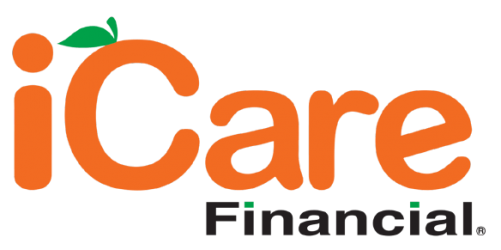Maximizing Your Dental Practice’s Revenue with Patient Financing
Maximizing Your Dental Practice's Revenue with Patient Financing
In today’s fast-paced world, who doesn’t want a radiant smile? Yet the cost of dental care can be daunting. In fact, according to the American Dental Association, 33.6% of adults ages 19-64 do not have any dental benefits. That’s when patient financing for dental offices emerges as a beacon of hope. It's not just about easing treatment costs; it’s about making dental care universally accessible.
As healthcare expenses soar, the clamor for medical financing programs intensifies. These aren’t mere financial tools; they’re bridges to better health. They transform the dental journey by alleviating financial burdens and enhancing the overall patient experience. Imagine a world where dental health isn’t a luxury but a right. Offering flexible payment options is the key to unlocking unparalleled patient satisfaction and deep-rooted trust in dental practices.
The Rise of Patient Financing
Medical patient financing has undergone a transformative journey. Historically patients relied heavily on insurance or out-of-pocket payments. However, the 20th century saw a shift. According to a recent survey by university experts, medical problems accounted for 66.5 percent of all bankruptcies due to excessive healthcare bills or time away from work.
According to the study, 530,000 households file for bankruptcy annually due to medical problems and expenses. This change was driven by the rise of insurance coverage and the introduction of financing options.
The 21st century brought even more change. With healthcare costs soaring, the need for flexible payment methods became paramount. Traditional payment methods, once dominant, began to wane. In their place, medical care financing programs emerged, offering patients tailored solutions.
The detailed measure of unpaid medical bills among older adults expanded by 20% in 2019 and 2020, from $44.8 billion to $53.8 billion. However, older adults announced fewer doctor visits and lower out-of-pocket expenses in 2020 than in 2019.
This shift towards financing options eases financial stress and empowers patients, allowing them to access necessary treatments without immediate financial burden. The evolution from traditional payments to patient financing has undeniably reshaped the medical landscape.
Benefits of Offering Financing Options in Dental Practices
Here are some benefits of Offering Financing Options in Dental Practices.
Reducing Financial Stress for Patients
Medical care financing programs have revolutionized dental care accessibility. They alleviate immediate financial burdens by breaking down hefty treatment costs into manageable installments. This approach not only makes treatments affordable but also offers immense psychological relief. Instead of deferring essential treatments due to cost concerns, patients can now proceed confidently, knowing they have a financial safety net.
Increasing Treatment Acceptance Rates
Studies indicate that dental practices offering financing options witness higher treatment acceptance rates. In fact, an expected 41% of individuals — or about 100 million adults — presently face such obligation, going from under $500 (16%) to $10,000 or more (12%), as per a report from the Kaiser Family Establishment. claiming $2,500 as a base level, 56% who convey medical or potentially dental obligation owe underneath that sum and 44% owe that much or more.
The direct correlation between financing availability and patients opting for recommended treatments is undeniable. Patients who are presented with feasible payment plans are more likely to accept and proceed with necessary treatments.
Improving Overall Patient Experience
Patient financing for veterinary offices isn't limited to medical practices alone; even veterinary offices have embraced it. The convenience and flexibility of medical financing programs significantly enhance the patient experience. When dental practices prioritize patients' financial well-being alongside their dental health, it fosters trust. This trust, coupled with the ease of payment, cultivates patient loyalty, ensuring they return for future treatments and recommend the practice to others.
Challenges and Considerations
Here are some challenges and considerations.
Risk of Default: In-house financing means practices act as lenders. There's potential for patient default to impact the practice's finances.
Increased Administrative Costs: Managing in-house financing can lead to higher administrative expenses requiring more resources and oversight.
Third-Party Fees: While third-party financing reduces default risks, they often charge fees, which can eat into the practice's profits.
Reduced Patient Loyalty: Relying on third-party financing might diminish patient loyalty as their primary financial relationship becomes with the lender.
High Interest Rates: Healthcare credit cards though versatile, often come with high interest rates deterring some patients and straining trust.
Choosing the Right Program: Selecting the right medical financing program and balancing the benefits with potential drawbacks is essential.
Patient Financial Strain: Even with financing, some patients might find it challenging to manage payments leading to potential treatment avoidance.
Conclusion
Patient financing in dental practices has undeniably transformed the landscape of dental care. By alleviating financial burdens, it has made treatments more accessible, leading to enhanced patient satisfaction. The ripple effects are evident from increased treatment acceptance rates to fostering deeper trust.
As we reflect on its myriad benefits, it becomes clear that integrating medical patient financing isn’t just an option; it’s a strategic move. For dental practices aiming to maximize revenue and elevate patient experience embracing these financing options is the way forward. The future of dental care is not just about treatments; it’s about making them accessible to all.
Want to set up a merchant account but don’t know where to start? Consider ICare Financial services your patients with fundamental information about their financing plan by focusing on the expected amount of their out-of-pocket payments. Contact us and see how this can work for your practice.




